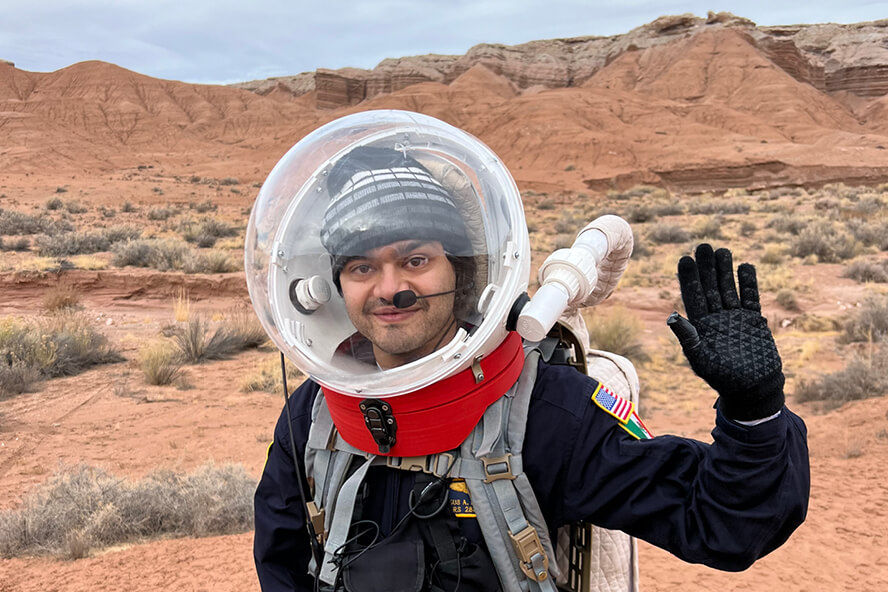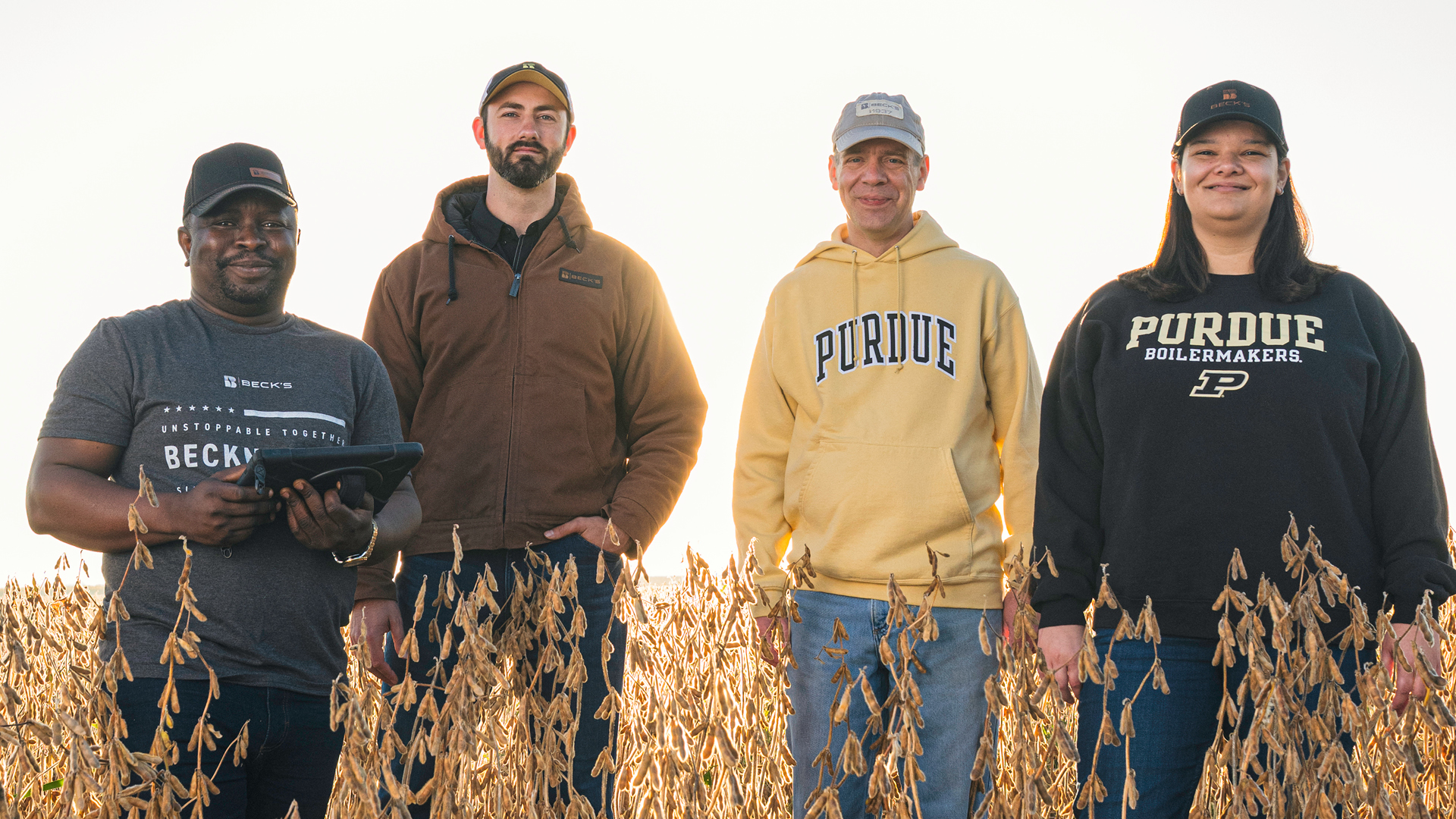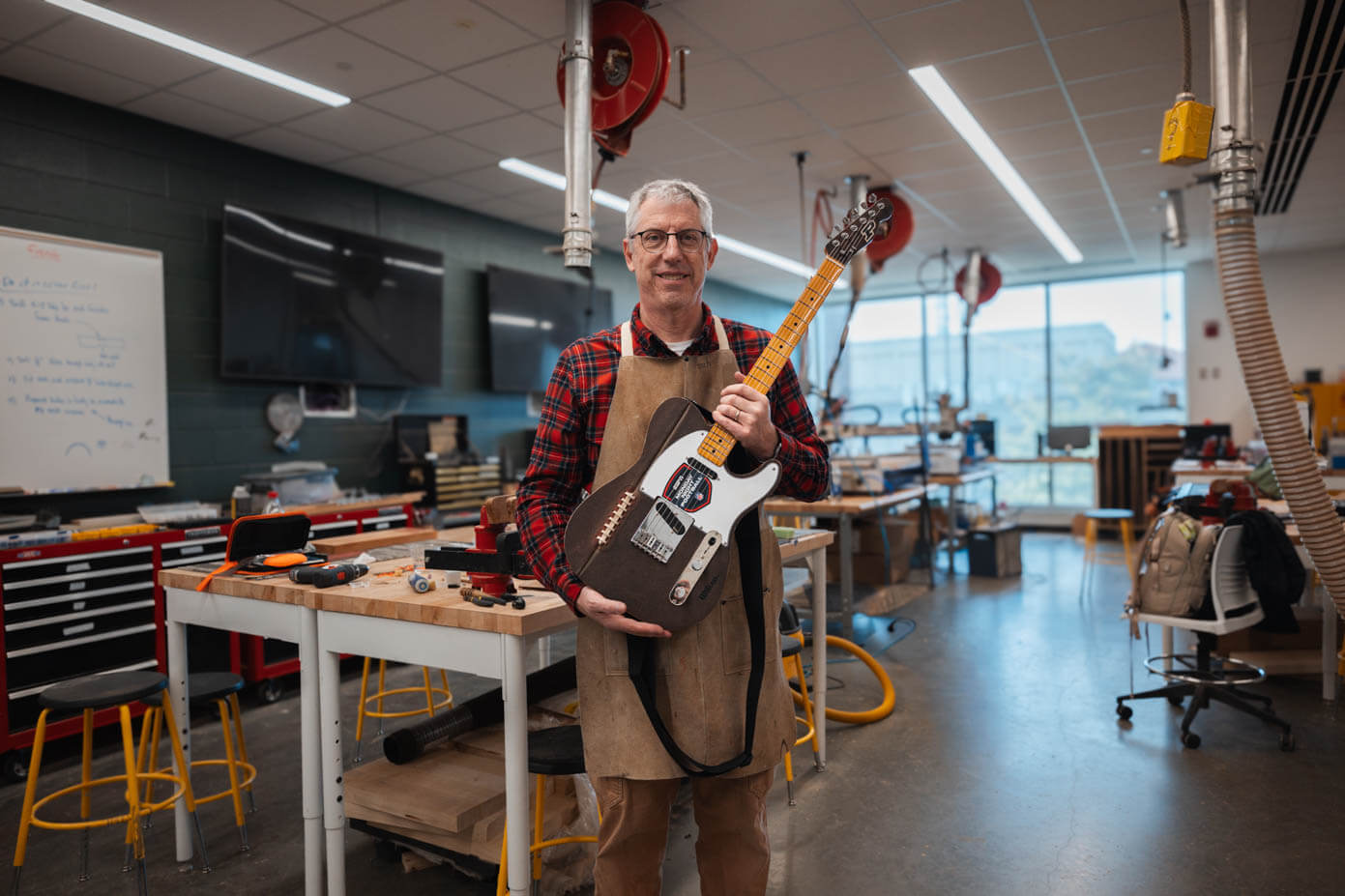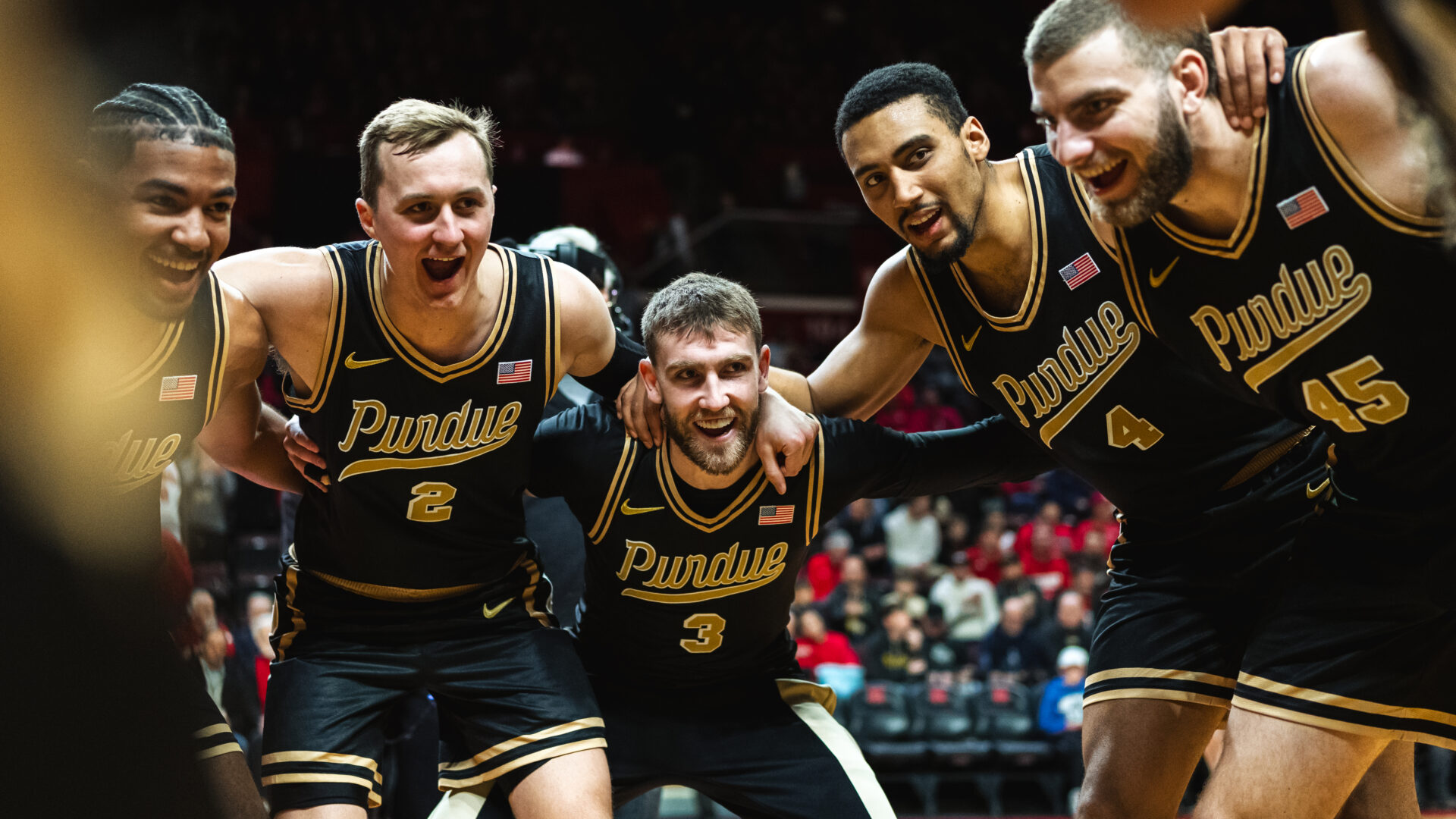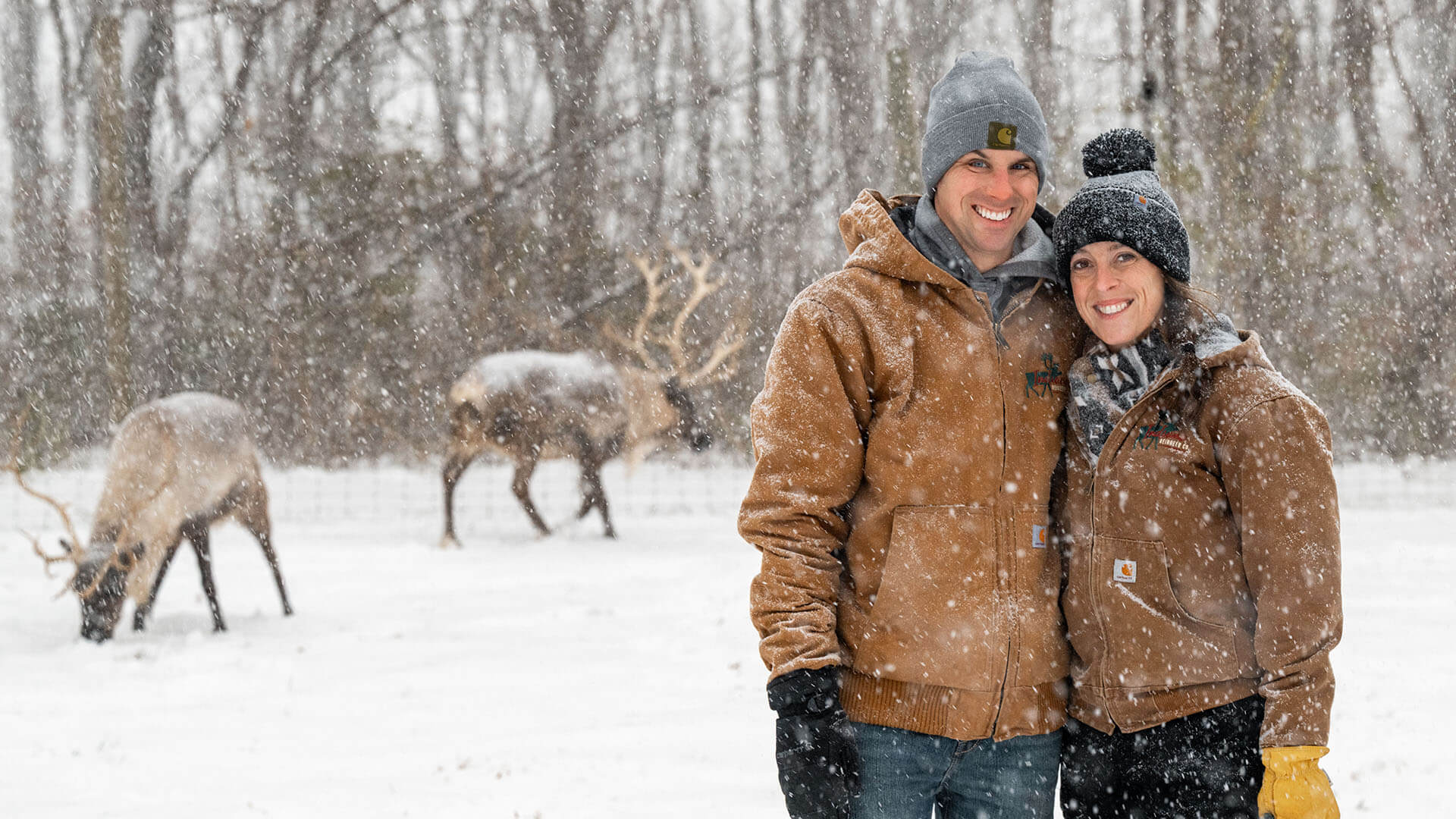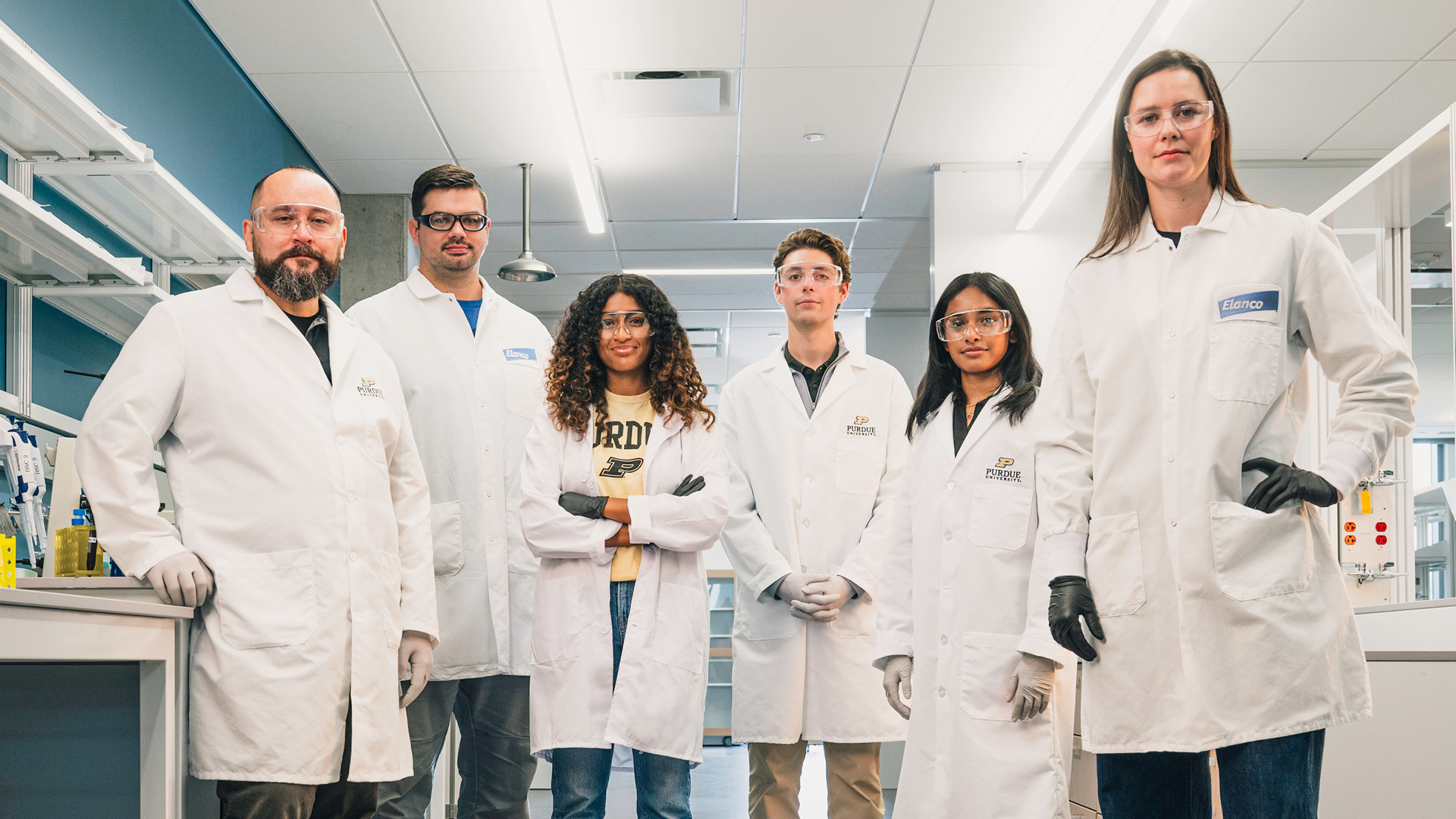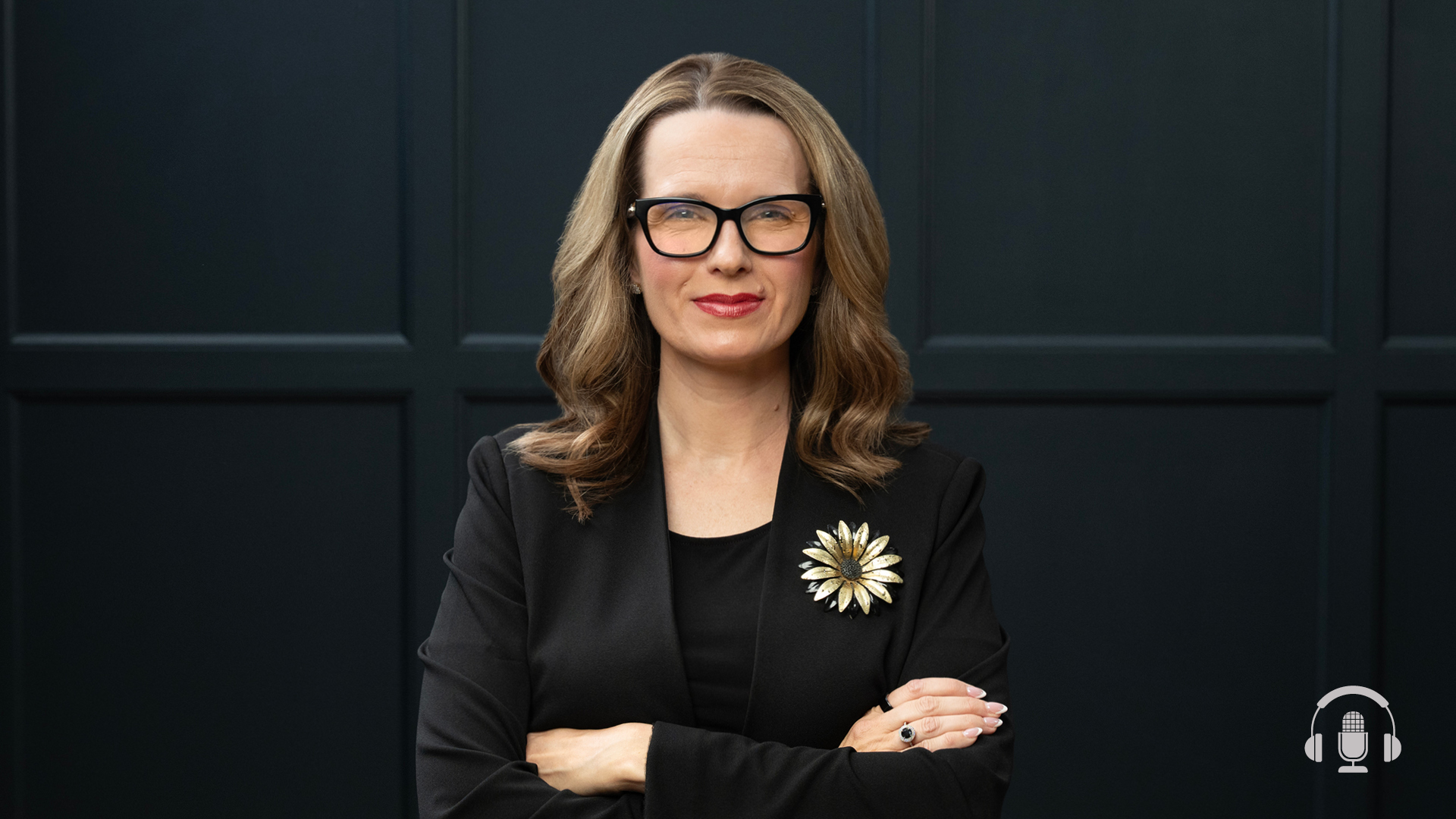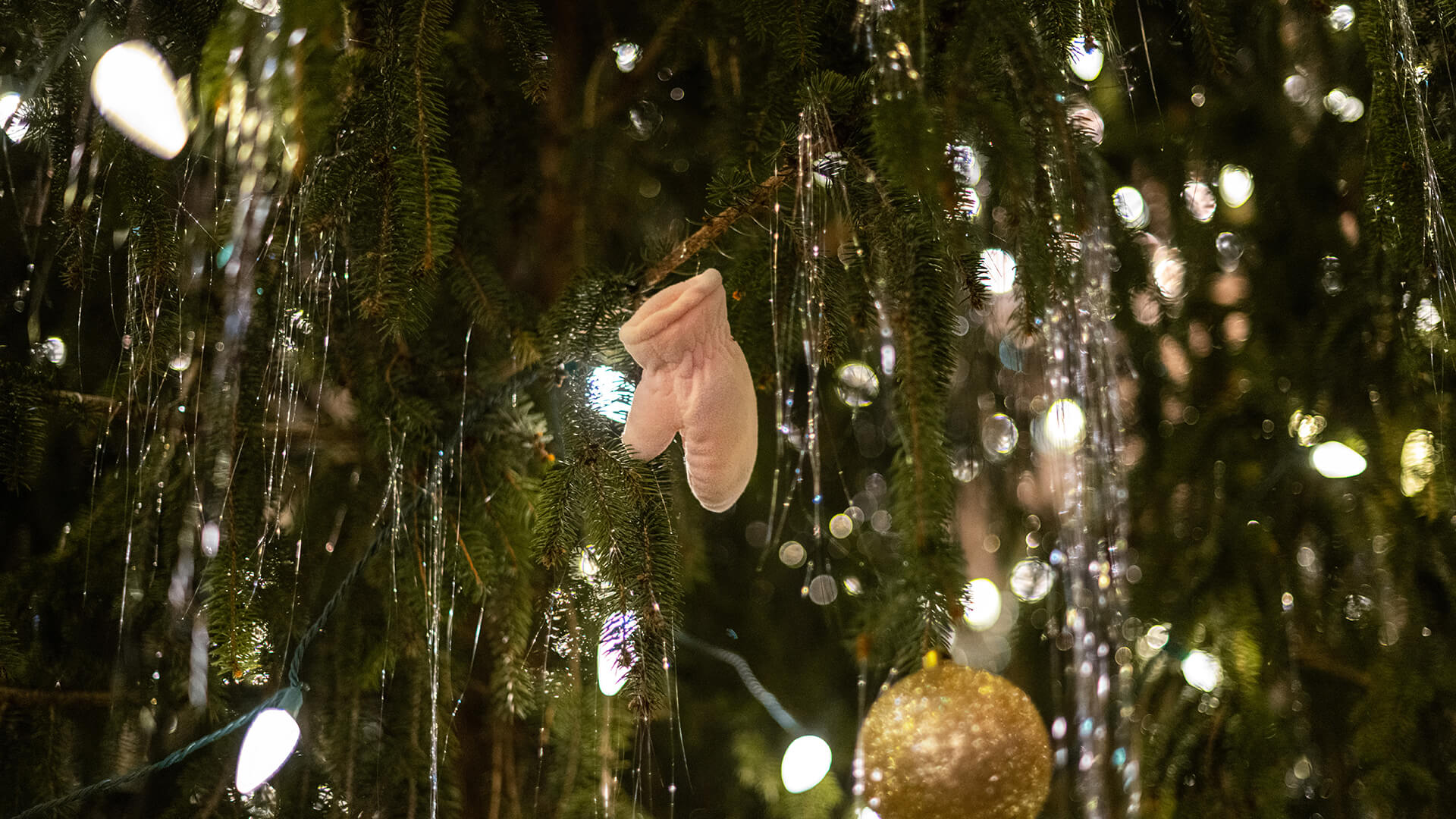Journey to ‘Mars’ with Purdue analog astronauts
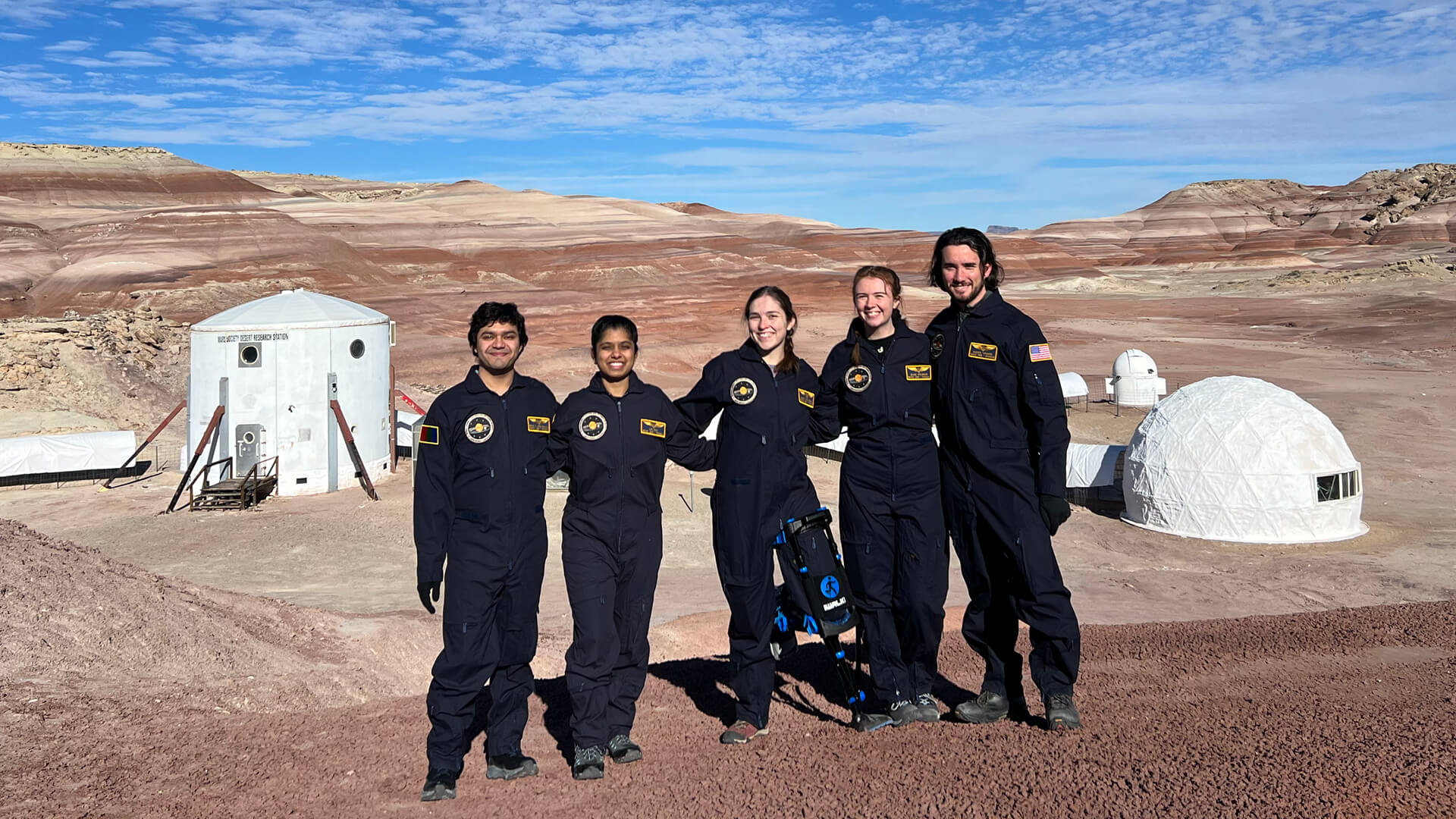
Members of Crew 288 at the Mars Desert Research Station in Hanksville, Utah: Jesus Meza Galvin, Lipi Roy, Riley McGlasson, Jilian Welshoff and Hunter Vannier. Not pictured: Cesare Guariniello and Ryan DeAngelis
Boilermakers given rare opportunity to send two crews on back-to-back Mars Desert Research Station missions
Most Purdue students spend their winter break at home with family and friends, soaking up the good tidings and cheer of the holiday season.
Gabriel Skowronek and 13 other Boilermakers spent two weeks at the closest thing to Mars on Earth, the Mars Desert Research Station (MDRS).
“The uniqueness of the opportunity — I just couldn’t pass it up,” says Skowronek, a senior majoring in physics and astronomy. “Being together as a team at MDRS during a time when we normally might be back home with family and friends really contributed to the community-building aspect of the mission.”
The Mars Society, which owns and operates MDRS, granted Purdue a rare opportunity to send two crews on two-week, back-to-back missions. Purdue’s missions to MDRS were timed to coincide with the university’s winter break: Crew 288 was on-site Dec. 9-23, 2023, and Crew 289 was there Dec. 24, 2023, to Jan. 6, 2024.
The two crews of Boilermaker analog astronauts comprised a diverse mix of undergraduate, master’s and PhD students, plus a research scientist, an alumnus and a Purdue University Online graduate student.
Crew 288 executive officer Riley McGlasson, a PhD student in earth, atmospheric, and planetary sciences, says that the MDRS location itself makes the mission worth it, no matter the time of year. “I’ve spent a fair amount of time in this part of Utah. It’s one of my favorite places in the world. And I will take any excuse to go back,” she says.
“As someone who studies Mars, you really can’t ask for a more perfect analog,” she adds.
Water and Spam
Time with loved ones is just one of the sacrifices that MDRS analog astronauts make. They are also constrained in their living conditions. Food is dehydrated or in a can. And water is limited to 400 gallons total, which must last seven people for two weeks.
This became an opportunity, not a problem.
“Our daily usage of water was less than anyone expected,” says Sara Paule, an online master’s degree student in communication and Crew 289 executive officer/crew journalist. “We got really good at washing dishes and being mindful of waste.”
She adds, “All the food is dehydrated, so if you want to cook with any kind of vegetables, you must soak them before you can use them. But if you’re smart, you can take that water and then reuse it. It can become your risotto liquid or your pasta water. One day we had very blue blueberry pancakes because we added the blueberry water to the pancake mix. And they were yummy.”
Hunter Vannier, a PhD student in earth, atmospheric, and planetary sciences and Crew 288 geologist, says conserving water is a habit he plans to carry forward. “I’ve been thinking about my own practices since returning from MDRS. I am so aware now of the amount of water I consume,” he says.
Vannier made the most of the station’s limited food pantry, too, adding several recipes to the community cookbook, which resides in the habitat kitchen and gets handed down from mission to mission.
His signature dish? “I made Spam fried rice — salty deliciousness.”
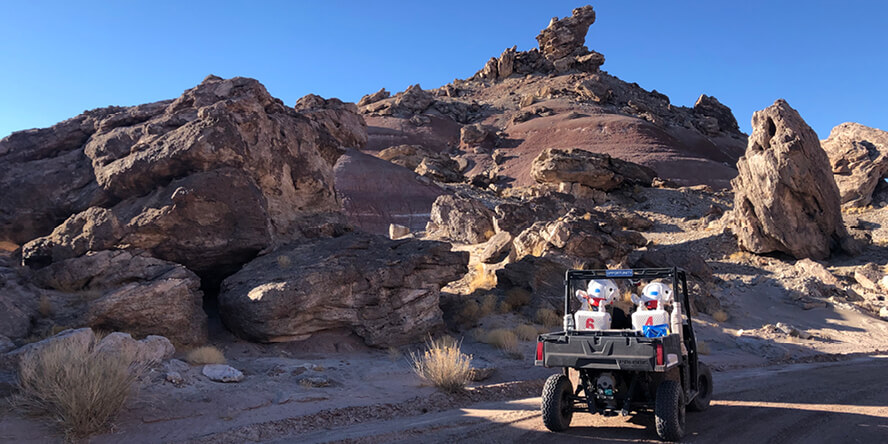
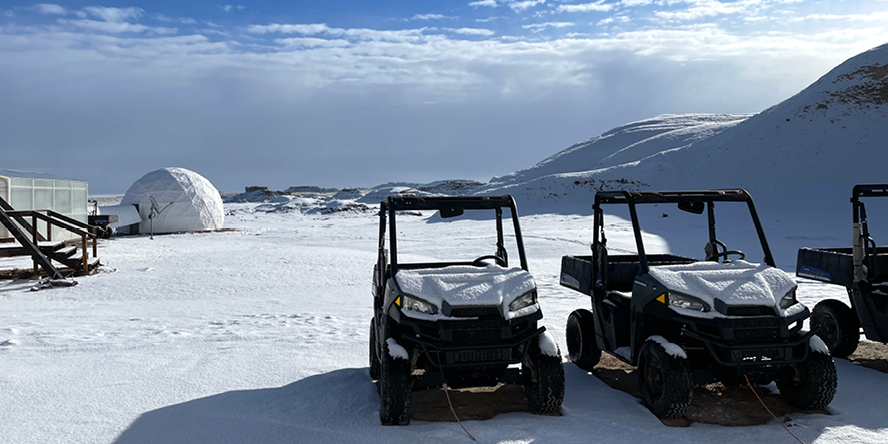
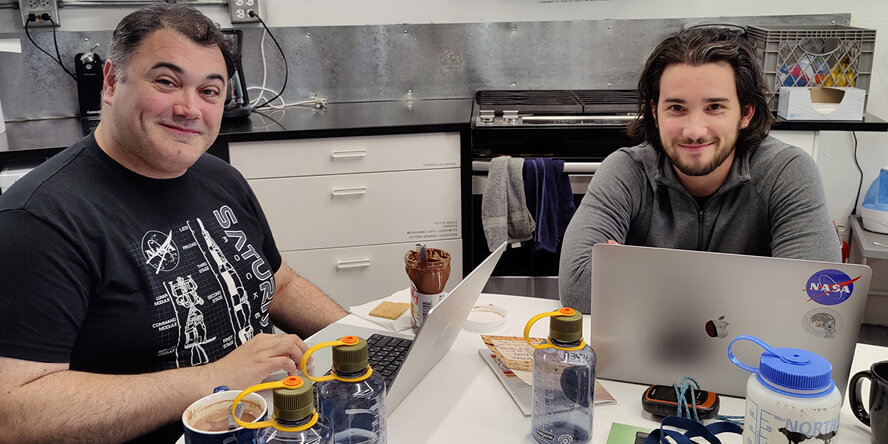
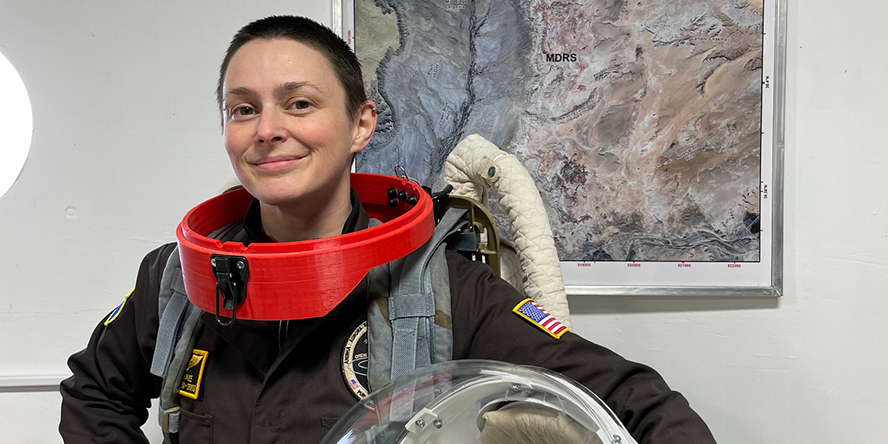
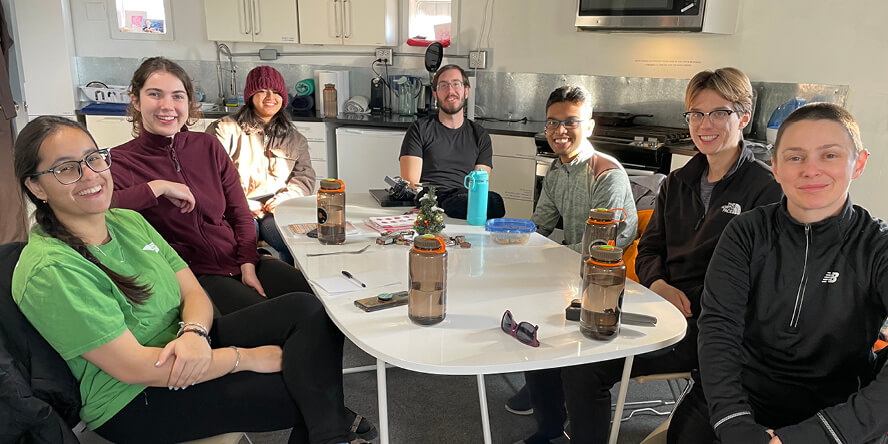
Cozy quarters
The MDRS habitat, affectionately known as “the Hab,” is a two-story, 8-meter-wide cylindrical building that one crew member describes as “cozy.” It’s also home base to the seven astronauts for their two-week mission.
“Everyone had their own individual sleeping quarters, and spaces were small, but it was doable. The overall habitat was compact, but in a cozy way,” Paule says.
The close environment created many opportunities for building community and teamwork, which is an essential part of the MDRS experience.
“The friendships I saw develop during the mission were heartwarming to me,” says Crew 289 commander Adriana Brown (BS environmental geoscience, ’22).
“People getting along makes my job a lot easier, but hearing engaging conversations about everything from the nature of reality to favorite karaoke songs and watching the team coalesce in real time was special,” she says.
Vannier’s crew had a similar experience. “There was no conflict at all. We were extremely cohesive and had a lot of fun with one another,” he says. “I think one of the biggest disagreements was a debate about the validity of the world building in Harry Potter compared to other sci-fi and fantasy fiction.”
He adds, “Everyone seemed to understand common courtesy and how to operate in a group. When there were chores to be done, no one waited for someone else to do it. They just immediately volunteered.”
Novel research
In addition to experiencing what harmonious daily life might be like for an astronaut on Mars, one of the most compelling reasons for MDRS participation is the opportunity to conduct rigorous field studies and research under the constraints of a high-fidelity, simulated Mars mission.
“For me, it all comes back to why I came to Purdue,” says Jesus Meza Galvan, a PhD student in aerospace engineering and Crew 288 engineer.
“Designing and building space hardware is what I want to do,” he says. “One of the big selling points of Purdue is that we are the Cradle of Astronauts. To have something like MDRS, where you’re actually getting exposure to practical problems that some space missions would face, is a phenomenal opportunity.”
Crew 289 astronomer and health/safety officer Skowronek agrees, “With my background in physics and astronomy, I delve into developments in planetary science. Just getting an opportunity to actually be at MDRS and see what it’s like to do novel research was really exciting.”
“Novel research” is a good description of the work that the two crews performed during their time at MDRS. Every project worked toward addressing real-life situations that future missions to Mars may face.
Designing and building space hardware is what I want to do. … To have something like MDRS, where you’re actually getting exposure to practical problems that some space missions would face, is a phenomenal opportunity.
Jesus Meza GalvaN A PhD student in aerospace engineering and Crew 288 engineer
Structured but not rigid
The MDRS simulation is structured, but not rigid. Crews are usually composed of seven members who fulfill the roles of commander, health and safety officer, greenhab officer, crew engineer and crew journalist. Other roles can also be assigned depending on crew members’ research interests (crew geologist, crew biologist). And a single crew member may serve in multiple roles.
Within this framework, each scientist proposes a research project that goes through an approval and then refinement process.
“I originally just proposed a dust coverage project,” Skowronek says. “But I have done work with photometry data analysis, which led to adding a secondary photometry research study using the MDRS telescopes.”
Meza likewise pivoted slightly with his research. “When I proposed my research project, I was fairly ambitious,” he says. “I wanted to make a solar panel at the station. But in talking to the MDRS directors, I learned there are a lot of safety considerations. You can’t have harmful chemicals, things like acids, which are sometimes required in fabrication. I had to find feasible solutions for this problem, so my project definitely evolved over time.”
Amazon doesn’t deliver to Mars
Meza’s pre-trip revisions point to a vital aspect of the MDRS simulation — the ability to problem-solve in a limited environment. Astronauts can’t run to the local hardware store or place an online order on Mars. They must use available resources to diagnose and solve problems.
“At one point we noticed that the furnace didn’t seem to be working,” Crew 289 executive officer Paule says. “It was a windy day and the temperature inside the Hab started dropping. So we had to get on comms with the MDRS director, and he had to walk us through what to do to fix the problem.”
The crew also had to innovate when they noticed that humidity levels were getting dangerously low in the greenhab environment. Several student research projects, including one simulating the effects of Mars radiation on plants, required living specimens.
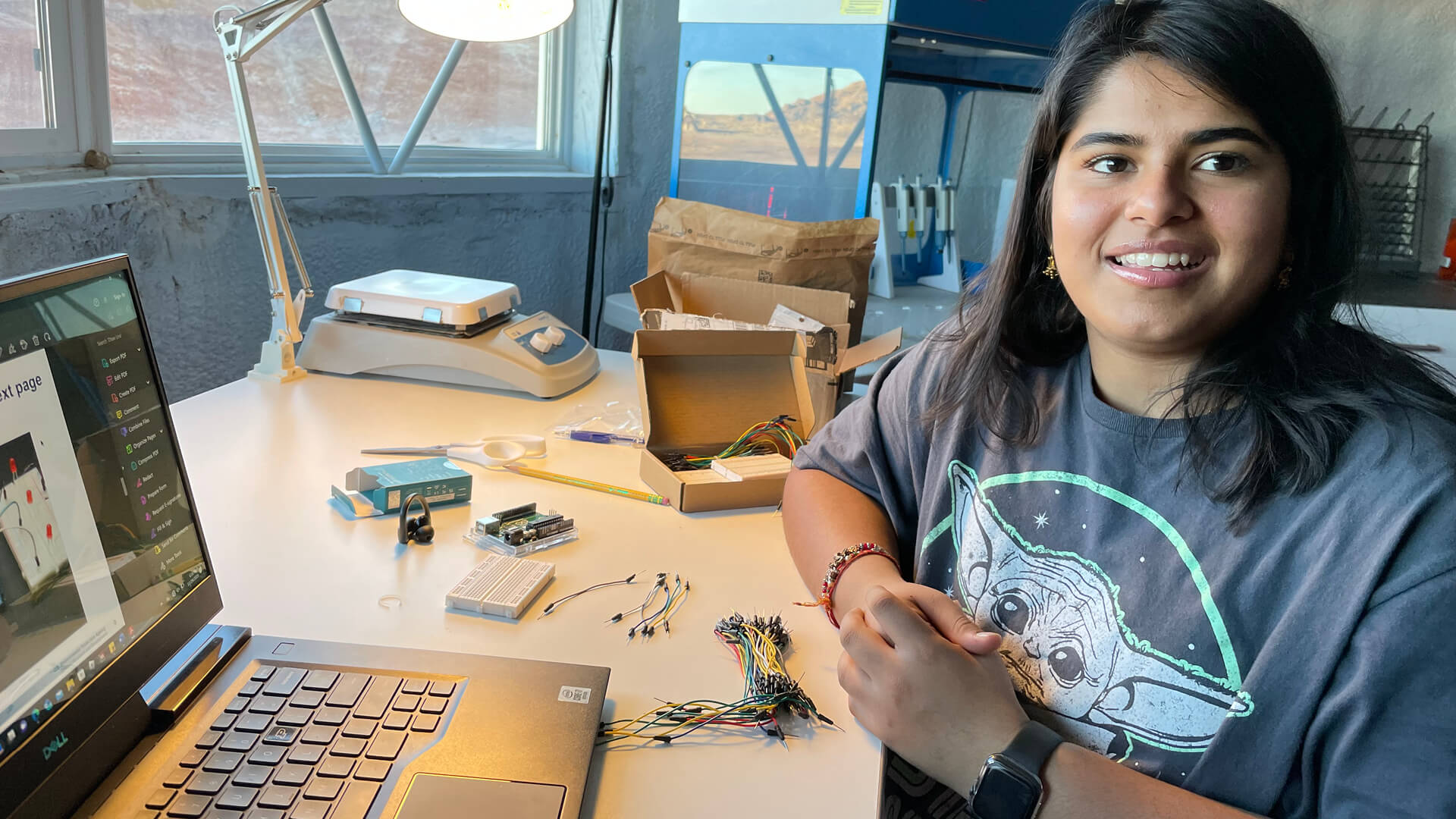
“Our efforts were led by Riya Raj, our greenhab officer and crew biologist,” Crew 289 commander Brown noted. “But the whole team pitched in.”
After trying several solutions that didn’t work, Raj came up with the idea of wrapping the plants with a clear plastic film and then misting inside of them regularly. “You could see a little pocket of humidity develop right around the plant,” Brown says.
Not all problem-solving opportunities were so serious.
“This is a very silly example,” McGlasson, 288 executive officer, says. “But we had an inflatable baby Yoda in the Hab for the holidays and the plug broke. And it’s not like you can ship yourself a new one, so our crew engineer (Meza) took it to the engineering bay and fixed it.
“Even for small things you have to be self-sustaining and figure it out if something fails.”
Rocks and robots
Extravehicular activities (EVAs) are the foundation of field research at MDRS. They take crews into the surrounding area, and they require the most from participants in terms of simulation. Analog astronauts must suit up in protective gear and carry a weighted pack before leaving the Hab via a simulated air lock.
Among other research activities, Crew 289 collected 90 oyster fossils and 93 sediment samples during their EVAs. Brown, who graduated from Purdue in 2022 with a degree in environmental geoscience, will use them in her doctoral research at the University of Michigan.
“I’m very grateful to my crewmates for going with me into the field and being willing to kneel in the dirt and feed samples into tiny tubes for a long period of time,” she says.
Crew 288 completed 10 EVAs, each lasting four hours to mirror oxygen capacity on Mars. Vannier, crew geologist, used some of these EVAs to train other team members how to implement classic geologic sampling techniques comparable to those that astronauts are instructed to use on the moon. The goal was to create a consistent workflow in the investigation area.
“There has to be two or three people present, each with well-defined roles,” Vannier says. “The EVAs I led were especially helpful in understanding time management. On another planetary surface, every second is precious.”
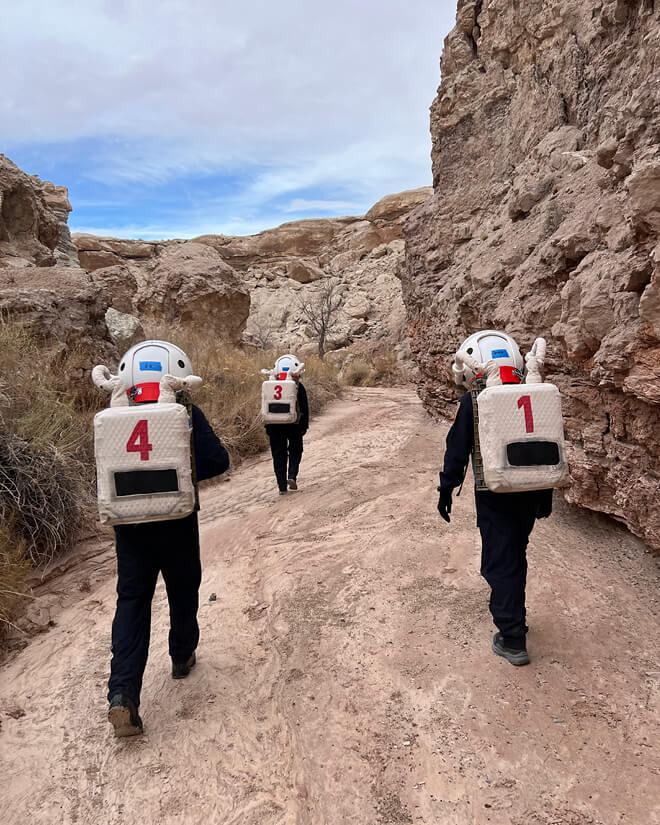
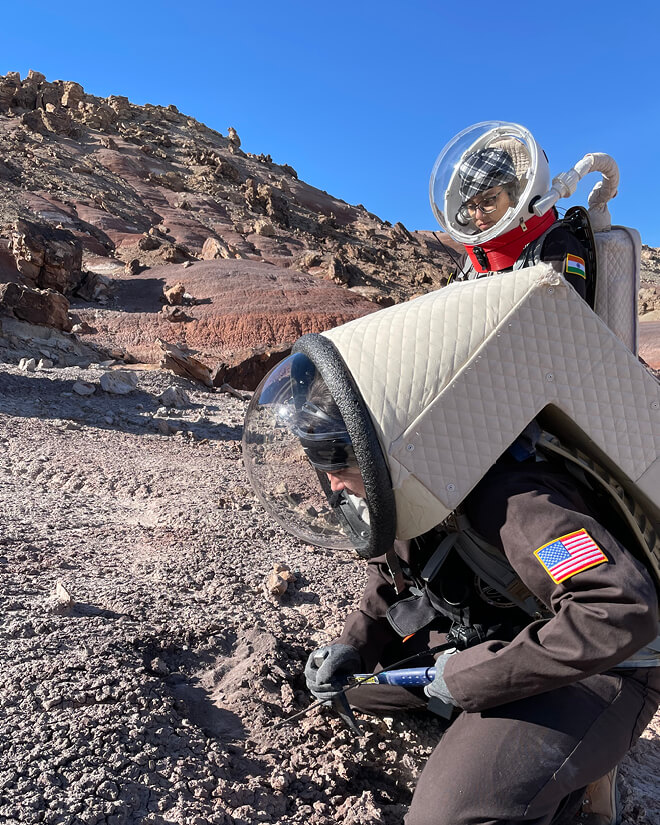
For her EVA research, McGlasson used a 450-megahertz ground-penetrating radar to measure the moisture content and subsurface structure in the top meter of the soil surrounding MDRS. Her research had an extra layer of complexity added to it; she broke her leg right before leaving for the mission.
“Even with my broken leg, I was still able to participate in EVAs. My total distance walked ended up being 10 miles,” she says.
In March, McGlasson will present a poster on her MDRS research, co-authored with Vannier, at a conference on planetary science.
“Another thing Crew 289 was excited about was our robotics experiment,” commander Brown says. “We had a small origami robot named Elf that we took out into the field to test different resistances. To our knowledge, origami robotics has not been tested at all at MDRS. And so we were able to do something really new and cutting edge and something that will be beneficial on Mars.”
Crew 288’s fieldwork with robotics was successful, too. They used drones to make deliveries from the Hab to a field work site and back.
Every mission is different
What are Purdue’s next steps at MDRS?
“We have already been invited back,” says Cesare Guariniello, Purdue research scientist and commander of Crew 288. “Our next big decision is how many rotations we want to request and when to do it. Until now, we’ve always gone over the winter holidays, but some students have expressed interest in going to MDRS in the spring.”
One thing is clear, new missions will mean new discoveries.
“This is my sixth mission to MDRS,” Guariniello says. “I like the fact that even after six times, every mission, every crew is different.”
